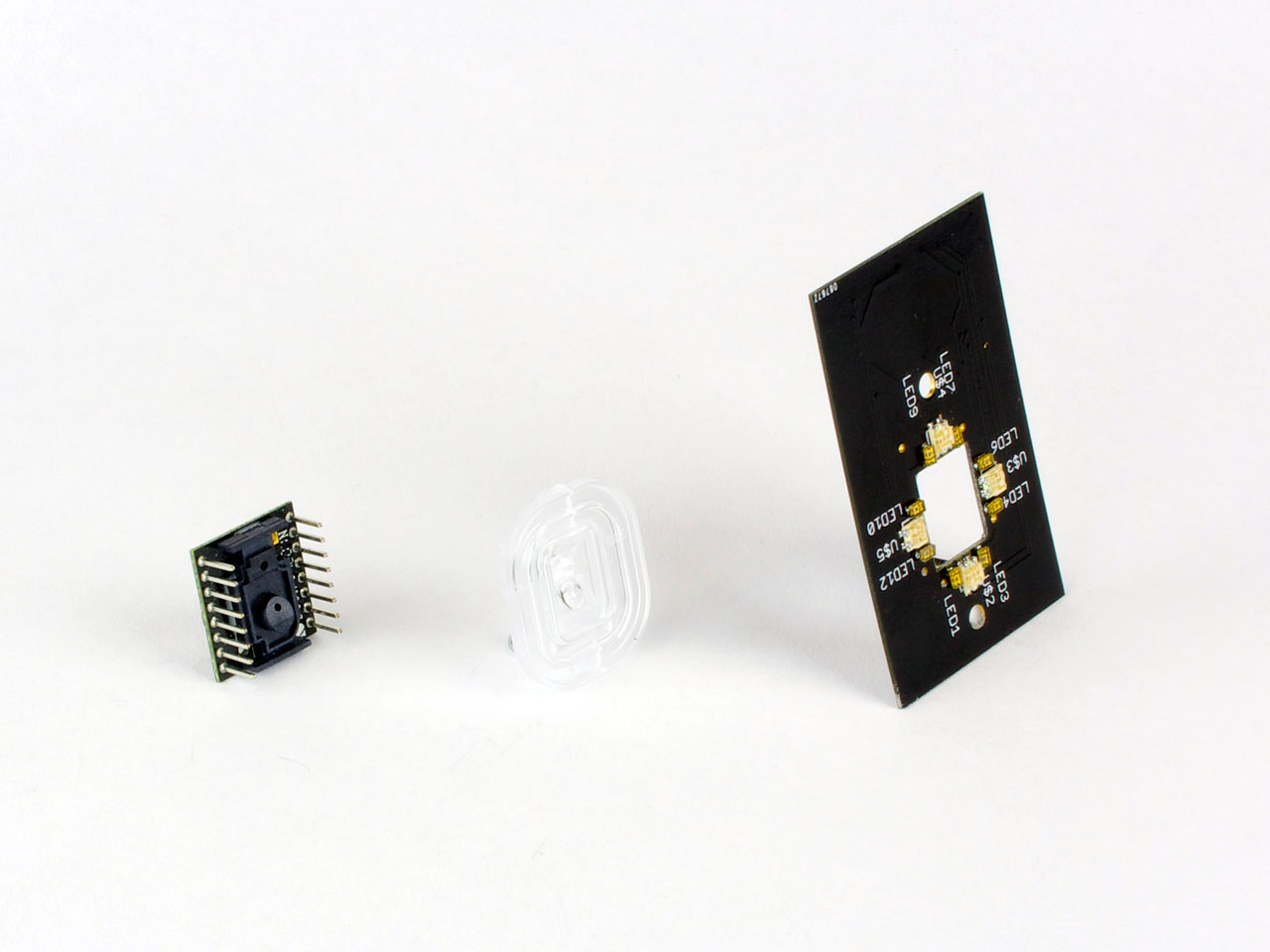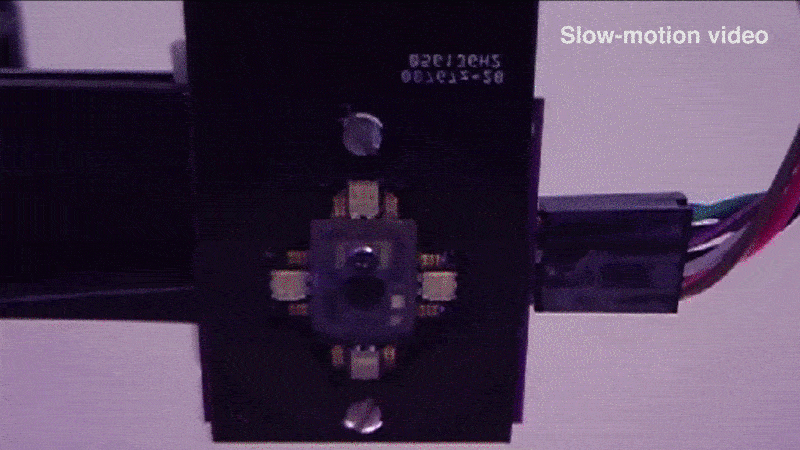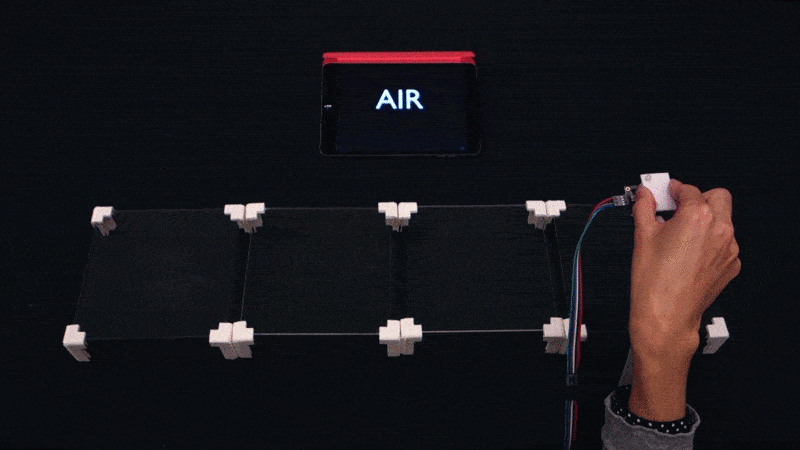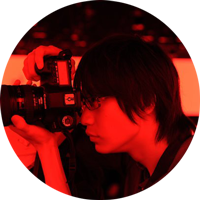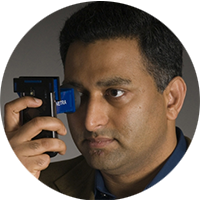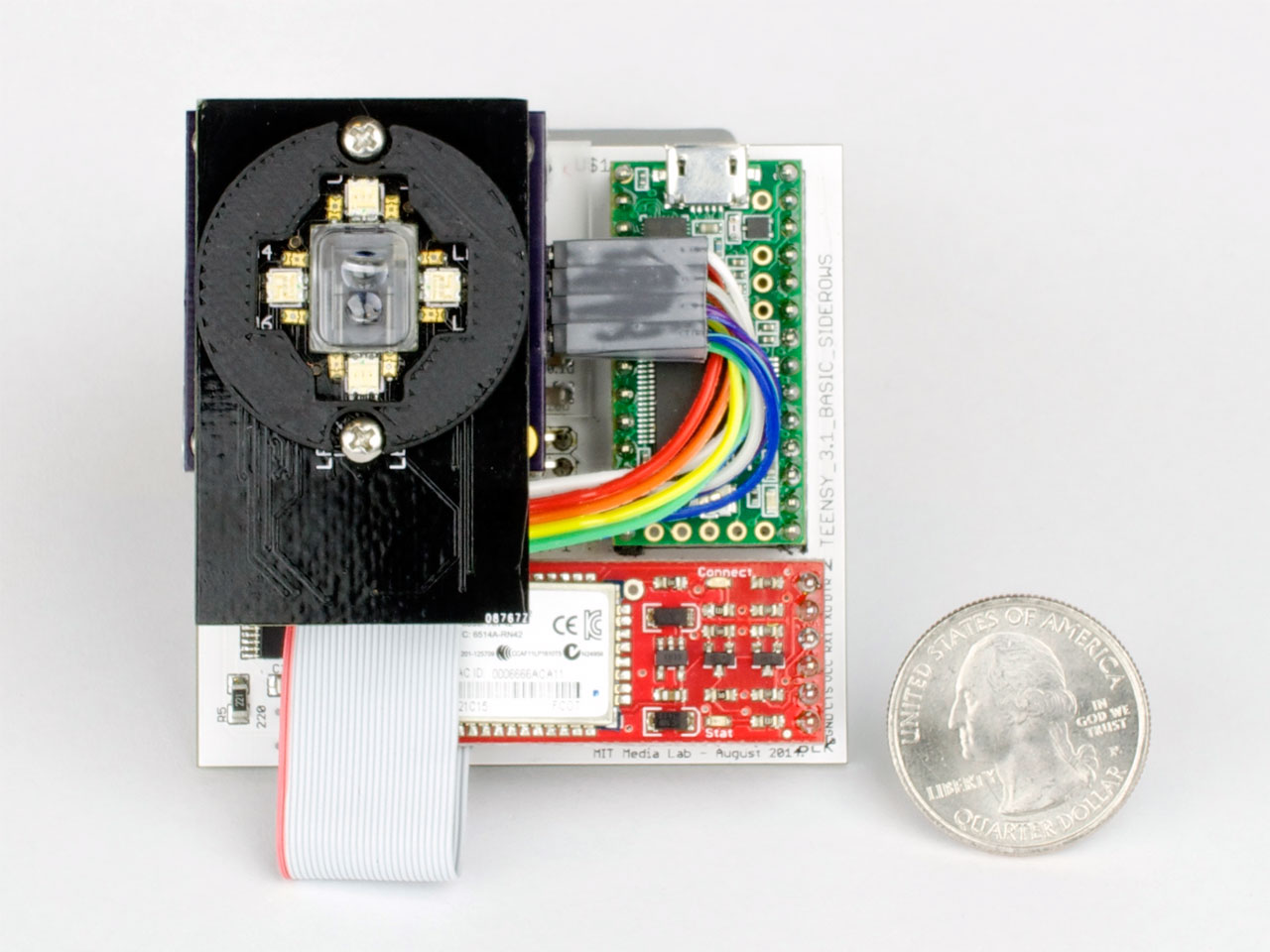
SpecTrans, New Sensing Technology
We present SpecTrans, a new sensing technology for surface classification of exotic materials, such as glass, transparent plastic, and metal. The proposed technique extracts optical features by employing laser and multi-directional, multi-spectral LED illumination that leverages the material’s optical properties.
The sensor hardware is small in size, and the proposed classification method requires significantly lower computational cost than conventional image-based methods, which use texture features or reflectance analysis, thereby providing real-time performance for ubiquitous computing.
